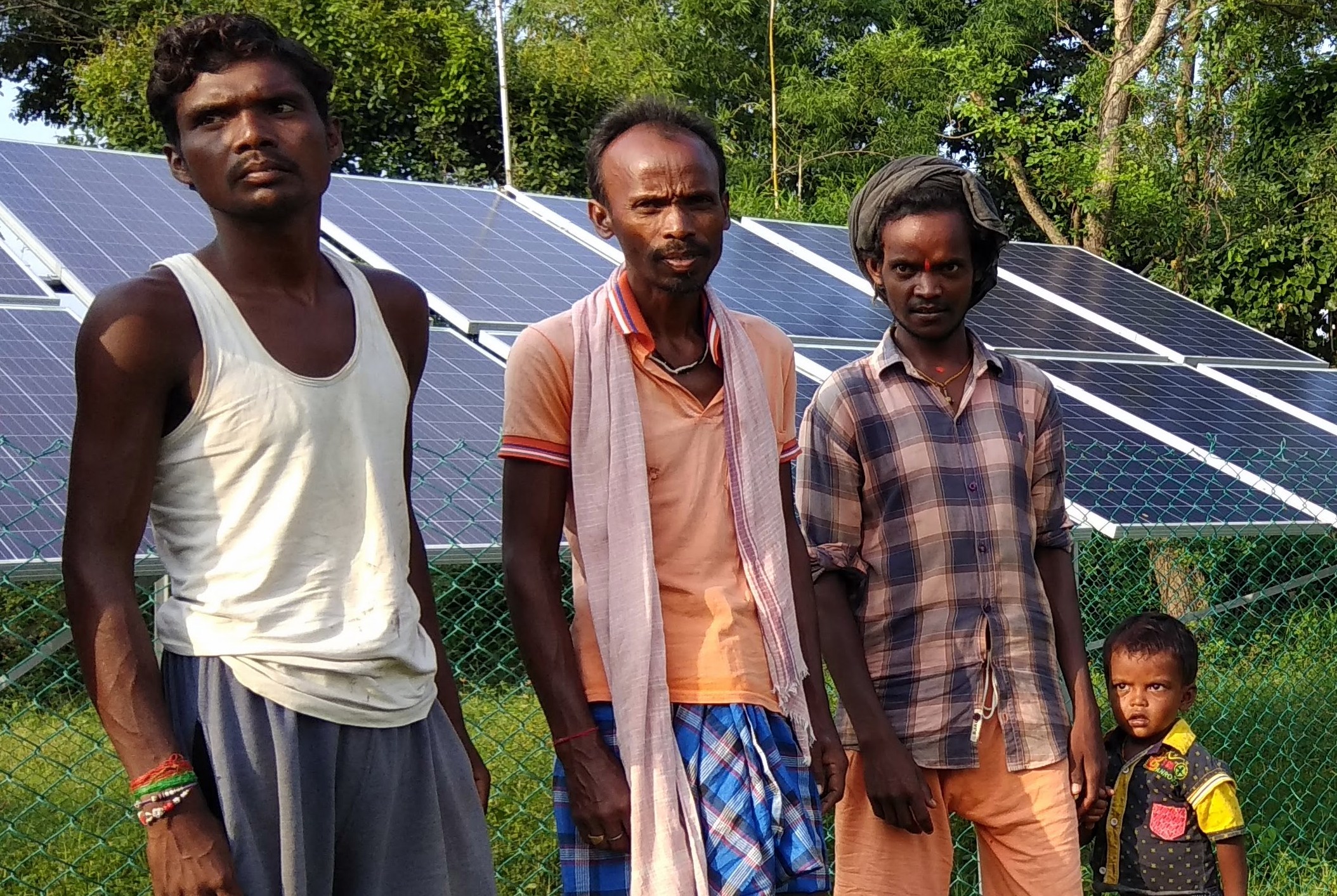Powering a rain-dependent farmer community with reliable solar irrigation

Syngenta Foundation (SFI) and Transforming Rural India Foundation (TRIF) mobilized a rain-reliant community of small-holder farmers with a perennial solar irrigation solution in Chokerbeda, Jharkhand
In mid-2019, it was reported that most parts of Jharkhand were seeing a week-on-week rainfall deficit of as much as 83%*. Chokerbeda is a village located 8 kilometers from the Gola block headquarters in Ramgarh district, Jharkhand.
This settlement is comprised of 450 households, mostly belonging to the indigenous Bediya tribe. Their main livelihood is dependent on rain-fed agriculture. But there was no irrigation infrastructure available in the village for the community.
In 2016, Syngenta Foundation (SFI) and Transforming Rural India Foundation (TRIF) started working in the village on an intensive agriculture program with a focus on the business of agriculture. Community collectives such as women self-help groups (SHGs) and village organizations (VOs) were formed and promoted by PRADAN, an NGO and the Jharkhand State Livelihood Promotion Society.
Once the intensive agriculture planning was started by these now trained-in-business farmers, the challenge of assured irrigation surfaced.
Reeling in the sunshine
A solution was needed by farmers to water their fields all year. There is a perennial rivulet passing near the village with an abandoned check-dam, but the water was in a deep ravine and thus, difficult to access. The increasing cost of diesel to run pump-sets that lifted this water to the fields was not an attractive option for the small-holder farmers. They found it difficult to afford to spend on these irrigation methods.
The quality and availability of grid electricity was unpredictable. It was also unavailable at the pumping site. But there was always the option to harness the sun’s energy via a solar-operated lift irrigation system.
Solar-powered water pumping
A technical design was prepared considering the proposed command area, 16 acres of land belonging to 33 farmers, along with their crop plan. It required a 5 KW solar power-run water pumping device, subsurface PVC pipes to carry water to the fields with 5 outlets and other accessories. Farmers were offered training and guidance to enable them to be active stakeholders in the project.
In the summer of 2019, when the state would yet again face a rain deficit in the coming months, the installation of this irrigation system was completed.
A bountiful solution
This new and assured irrigation system supported the timely planting of rice, since the monsoon arrived late. The farmers were able to harvest their food crop on time, and prepare for a second crop of potato before time, since water was available reliably in their field every day. It enabled the villagers to support their paddy crops, despite a late monsoon.
Some enterprising farmers also decided to grow high value crops like strawberries and bok-choi to be sold in the markets of Ranchi and Ramgarh.
Financing the irrigation solution
SFI and TRIF developed a financing model for the farmers, where they needed to contribute 25% of the project cost upfront in cash. The overall budget was approximately Rs 6.75 lakhs. To motivate the farmers to invest in this productive asset, exposure and training was organized and after few meetings they agreed to pay their contribution.
The financial resources available with self-help groups and village organisations helped the farmers to access finances when required. Once the contribution was made to the vendor, the installation was completed in a month. The rest of the investment came from SFI and Schneider Electric’s corporate social responsibility funds.
None of the 33 farmers now migrate to the cities looking for cash income. They cultivate cash crops such as potatoes, and vegetables. With technical and marketing support from withing the community, they have access to good quality produce and markets in other cities from their own village. This solar-powered irrigation solution is successful in providing resilience and additional income to the farmers.

